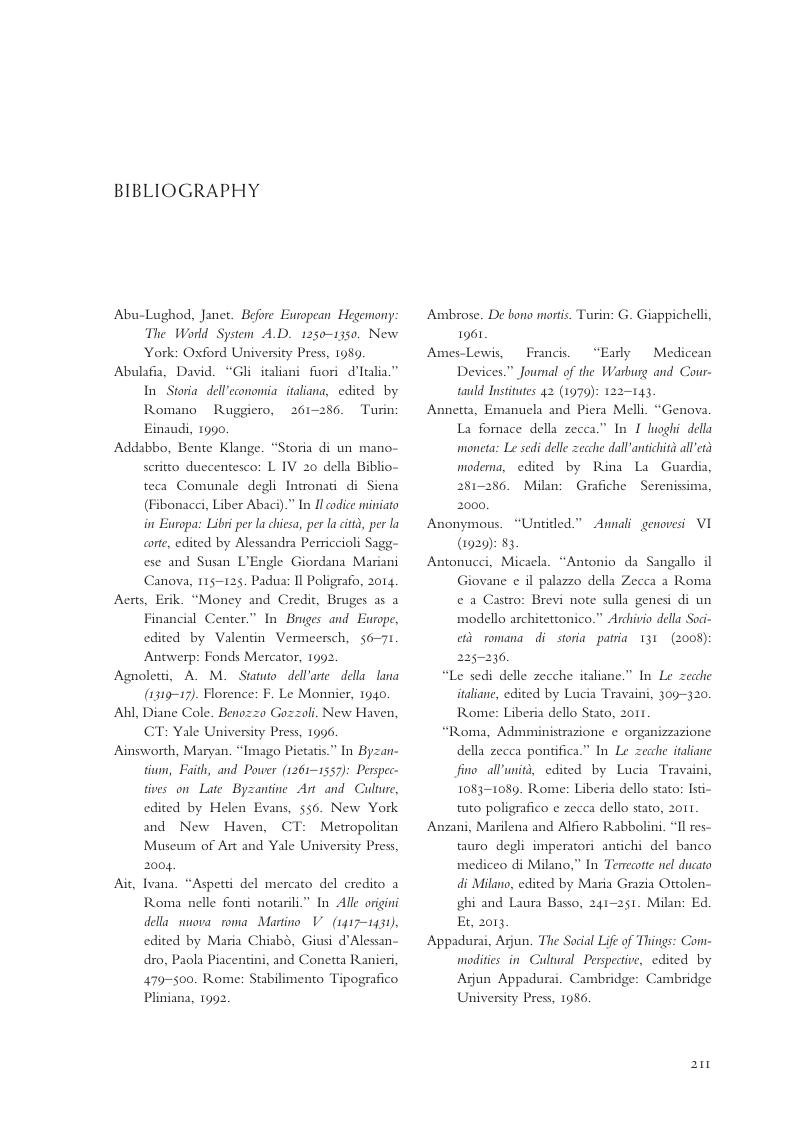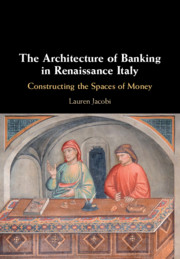Book contents
- The Architecture of Banking in Renaissance Italy
- Dedication
- The Architecture of Banking in Renaissance Italy
- Copyright page
- Contents
- Figures
- Acknowledgments
- Introduction
- One Networked Agglomerations
- Two The Technology of Money, Architecture, and the Public Good
- Three Across Economic Geographies: Trade Sites beyond the Peninsula
- Four The Transcendental Economy
- Epilogue
- Notes
- Bibliography
- Index
- References
Bibliography
Published online by Cambridge University Press: 25 April 2019
- The Architecture of Banking in Renaissance Italy
- Dedication
- The Architecture of Banking in Renaissance Italy
- Copyright page
- Contents
- Figures
- Acknowledgments
- Introduction
- One Networked Agglomerations
- Two The Technology of Money, Architecture, and the Public Good
- Three Across Economic Geographies: Trade Sites beyond the Peninsula
- Four The Transcendental Economy
- Epilogue
- Notes
- Bibliography
- Index
- References
Summary

- Type
- Chapter
- Information
- The Architecture of Banking in Renaissance ItalyConstructing the Spaces of Money, pp. 211 - 234Publisher: Cambridge University PressPrint publication year: 2019



